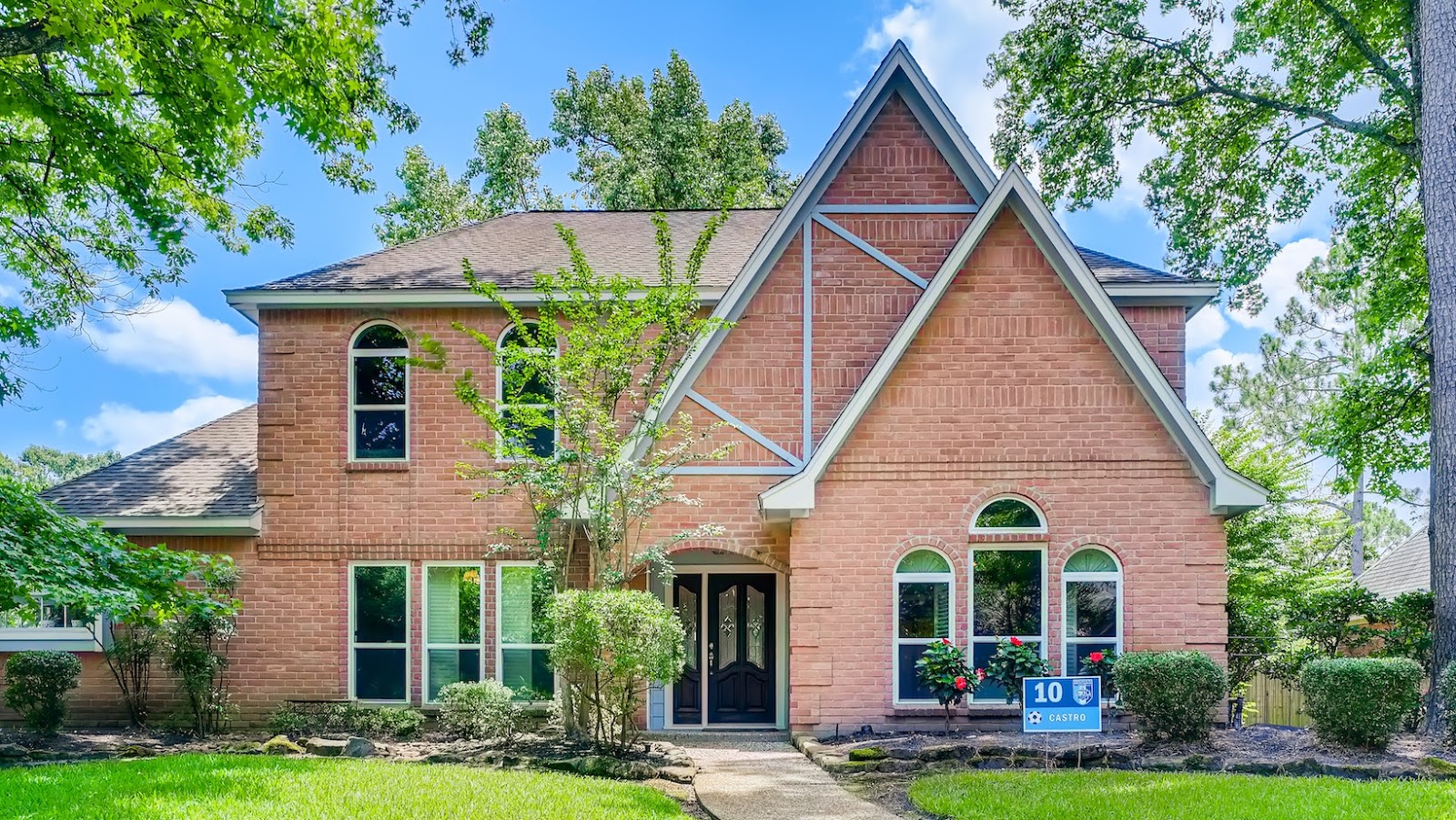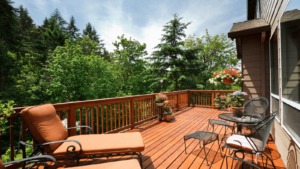Maintaining Your Brick House

Have you ever wondered how to keep your brick house looking as good as the day you built it?
From weatherproofing to cleaning and repairs, this article is here to help you maintain your brick house, giving you peace of mind for the future. You will learn how easy it can be for anyone to maintain their own brick house and ensure it lasts a lifetime.
Introduction to Brick Houses
Building a brick house is a long-term investment that requires proper maintenance to keep it looking great and structurally sound. Here are some tips you can follow to maintain your brick house:
Clean Your Bricks: Over time, dirt and grime can build up on the surface of the bricks, detracting from their natural beauty. Use a pressure washer or high-pressure hose to clean your exterior brick walls thoroughly. You can also use a mixture of water and vinegar to remove stubborn stains.
Inspect Your Brickwork: Check your brick walls regularly for any signs of damage or wear and tear. Look for cracks, missing or loose bricks, and holes in the mortar between the bricks. Attend to any issues promptly before they become extensive problems.
Repointing: Repointing is the process of repairing and replacing damaged or loose mortar in between the bricks. This technique can help to prevent water penetration and improve the overall structural stability of your brick house. Consider hiring a professional mason for this type of work.
Pro Tip: Always make sure to work with a professional and experienced contractor when building or maintaining a brick house to ensure the best results.
Choosing the Right Materials
When it comes to building a brick house, choosing the right materials is critical in ensuring its longevity and durability.
Here are some key factors to consider when selecting materials for your brick home:
Bricks: Choose high-quality bricks that are durable and made from materials that can withstand harsh weather conditions. Make sure they are the right size, shape, and color that suit your design preferences.
Mortar: Use the right type of mortar that has strong bonding properties and can withstand moisture and temperature changes. A mixture of lime and cement is commonly used to make mortar for brick houses.
Insulation: Incorporate insulation materials such as foam, fiberglass, or cellulose in the walls to improve energy efficiency and reduce heating and cooling costs.
Flashing: Make sure to install flashing materials around windows, doors, and at the intersections of roofs and walls to prevent water damage.
By choosing the right materials for your brick house, you can ensure that it will last for generations to come.
Understanding Building Codes
Understanding building codes is crucial for building a brick house that meets the required standards and regulations. These codes aim to ensure the safety, health, and welfare of the occupants and assess the structural integrity of the building’s design and construction.

Here are some tips to consider when building a brick house:
- Hire a licensed architect who is familiar with local building codes and can draft detailed plans and specifications for your brick house.
- Get a building permit before starting construction to ensure compliance with local building codes and regulations.
- Use high-quality bricks and mortar to ensure structural integrity and resistance to environmental factors such as moisture and temperature changes.
- Install proper insulation and ventilation systems to maintain optimal indoor air quality, temperature, and moisture levels.
Pro Tip: Reviewing and understanding building codes is essential when building a brick house. Hiring licensed professionals and ensuring high-quality materials will help ensure the longevity of your brick house.
Designing and Planning the Structure
Designing and planning the structure of a brick house is crucial to ensure its durability and longevity. Here are the essential steps to follow for building a brick house:
1. Choose the right type of bricks for your project – clay bricks are the most popular choice.
2. Prepare the foundation and footings of your house by digging trenches, adding gravel, and pouring concrete.
3. Lay the bricks on top of each other using mortar, making sure to stagger the joints for added strength and stability.
4. Add lintels above doors and windows to support the weight of the bricks.
5. Install the roof and windows after the brickwork is complete.
6. Allow the mortar to dry and cure completely for at least 24-48 hours before beginning any additional work.
By following these steps, you can ensure that your brick house is built to last and can be maintained for many years to come. Pro Tip – Regularly inspect and repair any cracks or damage to the mortar and brickwork to prevent erosion and water damage.
Building the Foundation
The foundation is one of the most crucial components of building a brick house, as it provides the necessary support for the entire structure. Follow these steps to ensure the foundation of your brick house is solid and stable:
1. Prepare the site by clearing and leveling the ground.
2. Excavate the area and dig a trench around the perimeter of the site.
3. Pour a concrete footing at the bottom of the trench, ensuring that it is level and on solid ground.
4. Lay the first course of bricks on the footing using mortar, ensuring that they are level and plumb.
5. Continue building the foundation to the desired height, making sure to reinforce it with steel bars and concrete.
By following these steps, you can build a solid foundation that will provide the support your brick house needs to last for years.
Pro Tip: Always ensure that the foundation is built to the local building codes and standards to avoid any legal complications in the future.
How To Build A Brick House
Constructing the walls of your brick house requires proper planning, materials, and technique. Here are some steps to follow for the perfect wall construction:
Materials: Use high-quality bricks, sand, cement, and mortar in the right proportions to ensure strong and durable walls.
Foundation: Ensure your foundation is solid and level. A poor foundation can cause cracks and instability throughout the walls.
Planning: Plan the wall layout, including the placement of doors and windows, before starting the construction.
Technique: Use a bricklaying technique such as the Flemish Bond, where each row of bricks is alternating headers and stretchers. This type of bond ensures strength and stability and looks attractive.
Mortar: Use the right consistency of mortar when laying the bricks. It should not be too wet or too dry.
Regular maintenance is key to ensuring the longevity of your brick house. Inspect the walls regularly for any signs of cracks or damage, and repair them immediately. Cleaning the walls with a mild detergent and water can help prevent the buildup of dirt and grime.

Pro tip: Always wear protective gear such as gloves, eye goggles, and a mask when constructing or repairing your brick house walls.
Finishing the Exterior
Finishing the exterior of a brick house is the final step in building and maintaining a durable and long-lasting structure. Here are some tips on how to properly finish the exterior of your brick house to ensure its longevity:
1. Clean the surface of your brick house using a power washer, removing any dirt or grime that may have accumulated during the building process.
2. Apply a high-quality masonry sealer to the exterior walls. This will help prevent moisture from entering the brick and causing damage.
3. Check for any cracks or holes in the brickwork and fill them with fresh mortar. This will help prevent water from seeping into the foundation and causing damage.
4. Apply a fresh coat of paint or adding any other finishing touches like shutters and landscaping. These steps will help give your brick house a polished look and keep it protected from the elements for years to come.
Maintaining Your Brick House
Maintaining a brick house is relatively simple and requires minimal effort if done regularly. If you’re planning to build a brick house, here are some maintenance tips to ensure longevity and durability of your investment:
Start with a strong foundation – A well-constructed foundation is critical for the longevity of a brick house. Make sure it’s built according to the local building codes and is of excellent quality.
Seal the brick – Sealing the brick walls creates an extra layer of protection that prevents moisture and other elements from penetrating the bricks. You can use a clear masonry sealer for this purpose.
Clean the brick – Regular cleaning of the brick walls removes dirt, dust, and other debris that can promote mold, mildew, and moss growth. Avoid using pressure washers, which can damage the brick and mortar.
Inspect the brick regularly – Inspect the brick walls at least once a year, preferably in the fall, to catch any problems early. Check for brick cracks, missing or loose mortar, and signs of water damage.
Pro Tip: Maintaining a brick house can save you a lot of money in the long run by avoiding expensive repairs. Make it a habit to regularly inspect and repair small damages to prevent big troubles.






